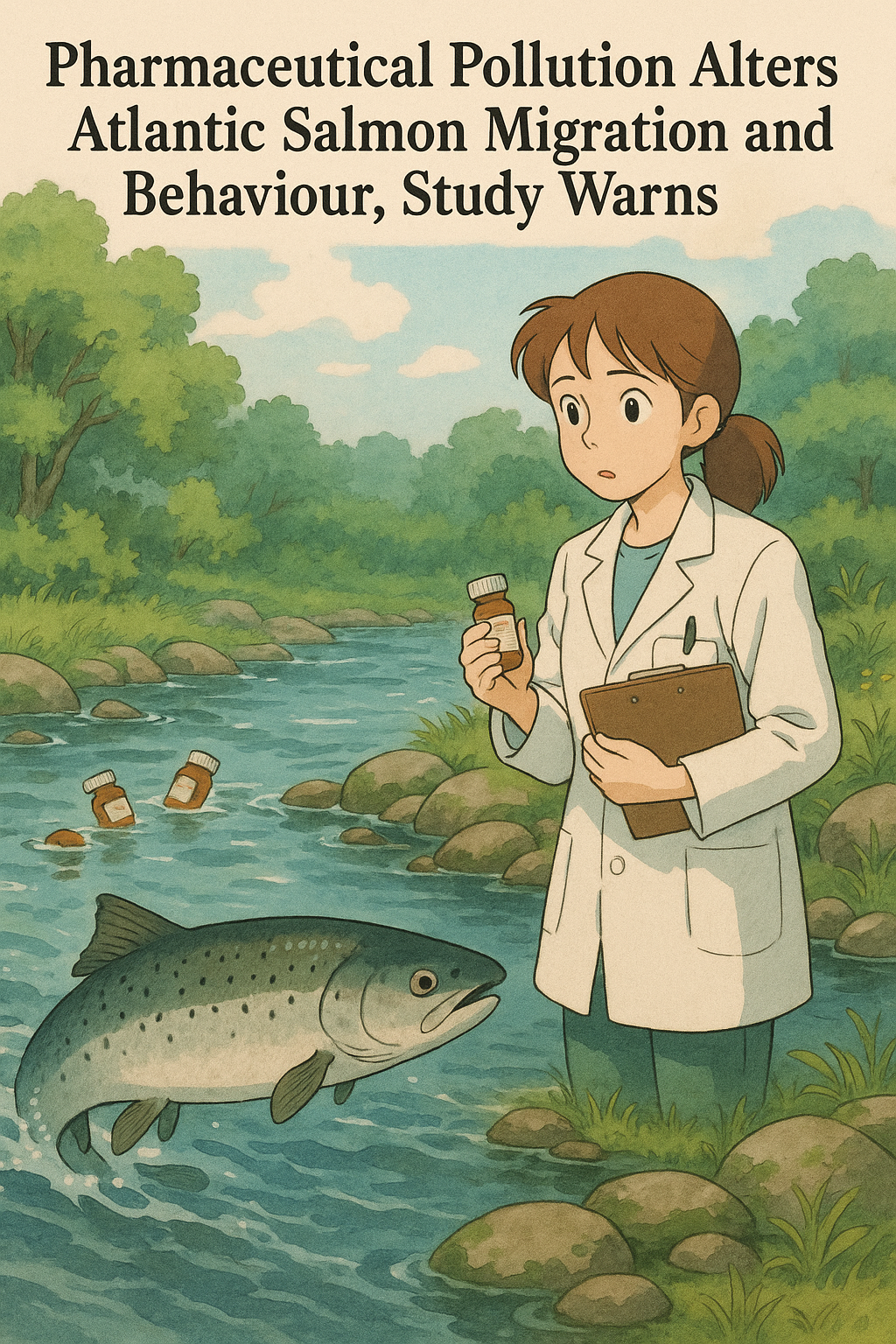Physical Address
18 C Ibbani Harohalli Village
Yelahanka Bengaluru 560064
Physical Address
18 C Ibbani Harohalli Village
Yelahanka Bengaluru 560064

April 19, 2025 – Stockholm, Sweden
A new study published in Science on April 10, 2025, reveals that pharmaceutical pollution, particularly the anti-anxiety drug clobazam, is dramatically changing the behavior of Atlantic salmon (Salmo salar). Researchers from the Swedish University of Agricultural Sciences tracked 279 juvenile salmon migrating from the River Dal to the Baltic Sea, finding that exposure to clobazam accelerates their journey but increases risks to their survival.
The study implanted slow-release clobazam dispensers in the fish, mimicking environmental pollution levels. Results showed treated salmon navigated hydropower dams two to eight times faster than unexposed counterparts, cutting travel time by about five hours. This boldness, likely due to reduced fear responses similar to human effects of benzodiazepines, led to more fish reaching the sea—over twice as many as controls.
However, this advantage comes with a cost. Clobazam-exposed salmon exhibited disrupted shoaling behavior, swimming farther apart and becoming more vulnerable to predators. The risk-taking behavior could lower long-term survival rates, threatening an already endangered species. “While faster migration might seem beneficial, it exposes salmon to greater dangers in the ocean,” said lead researcher Dr. Johan Eriksson.
The findings highlight a global issue, with over 900 pharmaceutical compounds detected in waterways worldwide. Psychoactive drugs like clobazam pose a unique threat due to their impact on neural pathways shared with fish. Unlike tramadol, another tested drug, which showed no significant effects, clobazam’s influence underscores the need for targeted action.
Experts warn of broader ecological consequences. Altered migration timing could disrupt food availability and predator dynamics, while the presence of multiple pollutants complicates predictions. Dr. Marcus Michelangeli from Griffith University noted, “The potential consequences become even more complex in ecosystems with diverse contaminants.”
Solutions are on the horizon. Improved wastewater treatment, green pharmacy practices, and public education on drug disposal are proposed to curb pollution. Regulatory measures to monitor industrial effluents are also under consideration.
As pharmaceutical pollution continues to infiltrate rivers globally, urgent steps are needed to protect Atlantic salmon and aquatic ecosystems. The study serves as a wake-up call for environmental and health authorities to address this “invisible agent of global change.”